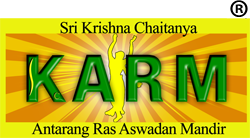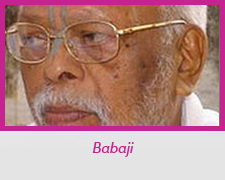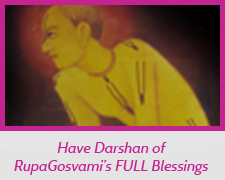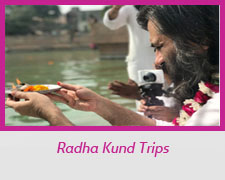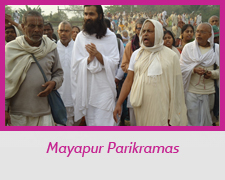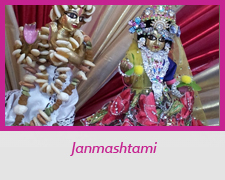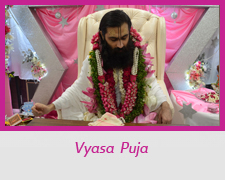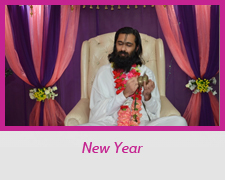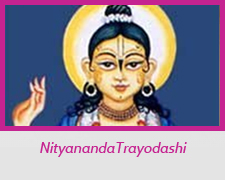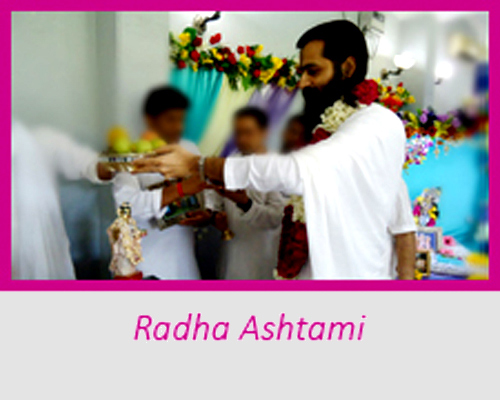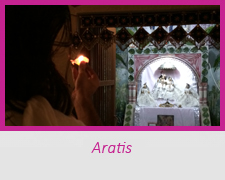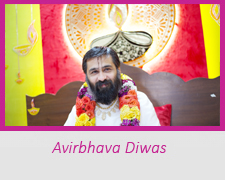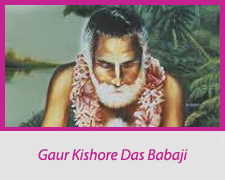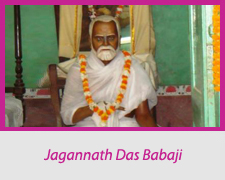Granthas in Preaching point of view??
Devotee- MAHÄRÄJA JÉ, one Mji from Iskcon, Austria is asking in context to Books written in Iskcon. Mji wants to know how one can understand whether the commentary on Grantha is correct or not. Whether they are really as it is or some point of view is inserted in that.
MAHÄRÄJA JÉ- Well! We see in entire Iskcon, all the Granthas written are from a preaching point of view. And you see in Bhagavad Gétä, 4th chapter, Lord Himself said that- I bestowed this knowledge to the Sun God and further, this knowledge was bestowed on others.
No Äcärya in any yuga wrote commentary on Bhagavad Gétä or Çrémad Bhagavatam or any other Grantha from a preaching point of view.
Try to understand this thing, if any point of view comes, then ‘as it is-ness’ of the Grantha goes away. You are writing ‘Bhagavad Gétä as it is’. Bhagavad Gétä can be ‘as it is’ only when it is not from any point of view, preaching point of view or point of view. If any point of view comes, it does not remain ‘as it is’. It is plain and simple! And Prabhupäda has not written commentary on Bhagavad Gétä. He has written commentary of Bhakti Rasämåta Siìdhu, Çrémad Bhagavatam, Caitanya Caritämåta and everything from a preaching point of view. You think that Viçvanätha Cakravarti Thäkura, Baldeva Vidyä Bhüñaëa, Ñaò Gosvämés were not intelligent enough, that they never wrote Grantha from any preaching point of view? Were they fools?? Were so many Äcäryas, Rämänuja Äcärya etc. fools? They wrote commentary on the çloka, not from preaching point of view. Be very clear!
All the Granthas by Prabhupäda are from preaching point of view and because of being from preaching point of view, the ‘as it is-ness’ of the Grantha is completely destroyed. It doesn’t remain as it is by any means. All Granthas are seen from preaching point of view. So, if you want to understand even ABCD of Gauòéya Vaiñëavism, you have to get rid of institutional books, commentaries and see the çloka and the meaning of the çloka to understand even the ABCD of Gauòéya Vaiñëavism Sampradäya. Have some common sense!
Go to Våndävana, buy Våndävana Mahimämåta, buy Viläpa Kusumäïjali, buy Rädhärasa Sudhänidhi. You will get the shock of your life when you read the meaning of the çlokas without institutional commentaries! No one reads Bhägavatam or this Caitanya Caritämåta of Iskcon, beyond Iskcon and Gauòéya Maöha. No one reads them. Nobody! Everyone knows that they have a unique point of view, preaching point of view. There’s no genuine commentary on Çrémad Bhägavatam in Iskcon. Everything is from preaching point of view.
Just see, Prahläda Mahäräja was in Kåñëa consciousness!?! What is this?? What has Prahläda Mahäräja got to do with Kåñëa consciousness? Was Prahläda Mahäräja in Kåñëa consciousness?
There’s a çloka in Caitanya Candrämåta Verse 88,
yathä yathä gaura-padäravinde
vindeta bhaktià kåta-puëya-räçiù
tathä tathotsarpati hådy akasmät
rädhä-padämbhoja-sudhämbu-räçiù
The meaning of this çloka is-
“As one develops love for Lord Gauräìga, yathä yathä gaura-padäravinde. Are the words not clear? gaura-padäravinde, Lord Gauräìga’s ‘padäravinde’ means Lotus Feet. As one develops love for Lord Gauräìga’s lotus feet, love for Rädhäräné will automatically be bestowed upon him, in his heart. He will get the darçana of Rädhäräné. This way it has been said. yathä yathä gaura-padäravinde means developing love for Lord Gauräìga’.
And the institutional commentary, the Iskcon commentary, the people commenting in their lectures is developing love for the Saàkértana movement of the Lord!?! Is this the meaning of the çloka?? Developing love for the Saàkértana movement of the Lord or the meaning of the çloka is ‘developing love for Lord Gauräìga’? Everything is from some point of view!
And they have given the worst commentary on the verse Bhagavad Gétä 18.68 –
ya idaà paramaà guhyaà
mad-bhakteñv abhidhäsyati
bhaktià mayi paräà kåtvä
mäm evaiñyaty asaàçayaù
Lord Kåñëa is saying that one who is giving this Supreme..rare knowledge to my devotees is most dear to me. And what Prabhupäda has translated? One who preaches about Kåñëa consciousness is most dear to Lord Kåñëa. Lord is telling, ‘one who preaches to my devotees’. And Prabhupäda is saying, ‘One who preaches to all materialistic people.’ So, everything is done from a preaching point of view. The real meaning of the çlokas is lost. Everything!
The real juice of the Granthas is lost! Because all the Granthas are from preaching point of view. So, you will not get anything if we read those Granthas because whenever point of view comes, ‘as it is-ness’ of the Granthas goes away. You may proclaim in a loud voice, ‘Our Granthas are as it is’. But in reality, if it is from preaching point of view, it is not ‘as it is’.
Let’s say, my name is Mädhava däsa and I write Grantha, and in Grantha, I write ‘Mädhava däsa point of view.’ Then they don’t remain ‘as it is’. They are from the ‘Mädhava däsa point of view.’ Similarly, if it is the preaching point of view, Prabhupäda point of view; then ‘as it is’ of the Granthas evaporate immediately. It is not ‘as it is’ anyway!
You see the institutional commentary on Caitanya Caritämåta verse.
ateva gopé bhava kari aìgékära
rätri dine cinte rädhä kåñëera vihära
You will be shocked to see the institutional, Prabhupäda commentary on this! You will be shocked!
bähya, antara, – ihära dui ta’ sädhana
‘bähye’ sädhaka-dehe kare çravaëa-kértana
It is in Caitanya Caritämåta. Read the commentary. You will be shocked to read the institutional commentary on this.
This simple çloka, even a child can understand this çloka! And because of institutional commentary, no one is able to understand and imbibe this çloka in their life.
bähya, antara, – ihära dui ta’ sadhana
‘bähye’ sädhaka-dehe kare çravaëa-kértana
‘mane’ nija siddha-deha kariyä bhävana
rätri-dine kare vraje kåñëera sevana
It is in Caitanya Caritämåta. This is the most important çloka for all Gauòéya Vaiñëava Devotees. bähya, antara, – ihära dui ta’ sadhana. ‘bähye’ sädhaka-dehe kare çravaëa-kértana. ‘mane’ nija siddha-deha kariyä bhävana. rätri-dine kare vraje kåñëera sevana. – directly spoken by Lord Gauräìga! Why is emphasis not on this çloka? This is the MOST MOST MOST important çloka for all Gauòéya Vaiñëavas.
bähya, antara, – ihära dui ta’ sadhana
‘bähye’ sädhaka-dehe kare çravaëa-kértana
‘mane’ nija siddha-deha kariyä bhävana
rätri-dine kare vraje kåñëera sevana
And see the institutional commentary, ruining the real meaning of the çloka. Why all this?? Whenever preaching point of view will come, ‘as it is-ness’ of any Grantha will evaporate.
